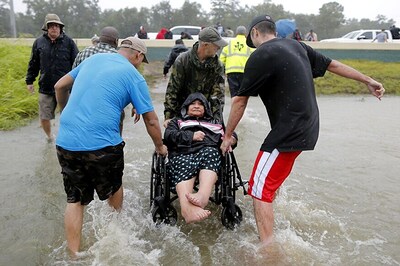
views
Hundreds of millions of Europeans are getting to grips with weeks of a massively contracted existence under lockdown. The goal is clear and very serious — reduce the spread of a deadly virus, keep critical medical resources and hospital beds free for the most vulnerable, save lives. But behind that sobering objective lies a new challenge for many: hours inside the same four walls, no office chatter, no social contact, kids to entertain (if you have them and they are not in school), the lure of the fridge. The reality of the new reality is that social media has become a near-essential resource. Whether for news, shared experiences, comic relief or a heated discussion, Twitter, Facebook and Instagram have become a lifeline to many.
While in Italy, tenors and the less tuneful have taken to singing songs from their balconies to cheer up neighbours and build solidarity, videos of the performances have entertained millions far beyond Italy on social media. Chris Martin, lead singer of the band Coldplay, took to Facebook on Monday to put on a live gig for people self-isolating, tagging it #TogetherAtHome. Singer John Legend took up the baton and said he would do the same on Tuesday. For anyone tracking the ins and outs of the virus, whether infection rates, epidemiological research, or the infection lag between Italy and its neighbours, Twitter is a constant source of information (and, be warned, misinformation).
While European leaders have been holding news conferences or delivering televised addresses, these are at best once a day.
Online, there is a constant stream of news, commentary from experts, graphs analysing the virus, and videos from people in Italy (which is 10-14 days ahead in terms of the infection spread) recounting what they wished they had known 10 days ago. As working from home (#WFH on Twitter) becomes the norm, there are tips on how best to do it, where to set up a desk, how to stay focused, and if you don’t have a desk, how an ironing board can double as an excellent, adjustable alternative. Among the tips for those doing conference calls from home are the obvious — make sure to get out of your pyjamas and brush your hair, even if you don’t necessarily have to be wearing trousers if you’re sitting behind a desk.
On Facebook, home workouts have proved popular, with people posting the best ways of staying fit while confined to a room. One popular video involves a woman doing a routine around a load of toilet rolls, which have been the object of hoarding by consumers worried about the impact of the virus.
As always, pets have proved a hit. Alongside WFH advice, many have been posting pictures of their cats and dogs, some of which look surprised by all the sudden unexpected attention.
For many, the surge in social media use in recent years has been an awful contradiction — rather than making people more friendly, it has tended to cut them off, cause division and fuel anger and resentment, not sociability. But as Europe adjusts to the reality of self-isolation, there are signs social media can bring out the best in people, not just the boastful or argumentative bits many decry. On Twitter, alongside advice on working from home or looking after elderly relatives, users are opening their direct messages, allowing anyone to contact them, and inviting those who want to talk or share concerns to get in touch.




















Comments
0 comment